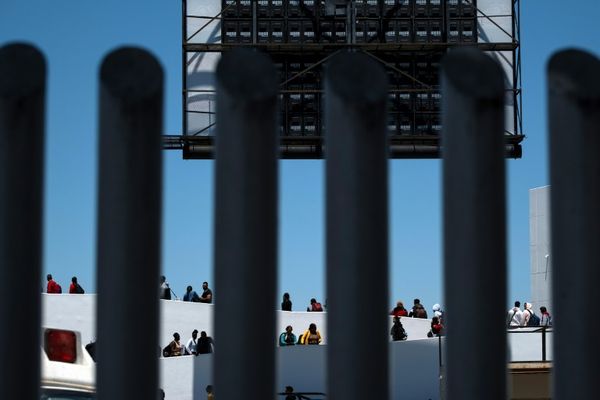Earlier this week, there were reports predicting petrol prices would increase by as much as 40 cents a litre by this weekend.
On Wednesday, RACQ warned Brisbane customers "don't go into the end of the week with an empty tank".
Two days later, NRMA says while prices will go up, it doesn't expect them to increase by as much as 40 cents a litre.
And the hikes will only be felt in certain capital cities.
Let's break down what's happening.
What's the prediction?
"We will see — and have seen — some prices go up in the capital cities that have [petrol] price cycles," NRMA spokesperson Peter Khoury said this afternoon.
"In Adelaide, we've already seen prices go up and then come back down again."
He said the Adelaide average had jumped to $2.40 a litre but, as of early this afternoon, it was back down to $1.82.
Which cities have fuel price cycles?
- Adelaide
- Brisbane
- Melbourne
- Perth
- Sydney
"The rest of the country — that's including Hobart, Canberra, Darwin … literally everywhere else — will not fluctuate," Mr Khoury said.
"They don't have the price cycle, they tend to move more in line with oil prices."
He said petrol prices in some regional centres that are closer to those capital cities may fluctuate, but not at the same rate in those capital cities.
Why are petrol prices going up in those capital cities?
"This is the first price hike we have seen since that full fuel excise was reintroduced at the end of September," RACQ spokesperson Lauren Cooney said.
That meant the tax on fuel went from 22 cents per litre to 46 cents per litre.
However, the impact of the fuel excise was somewhat masked by the fuel price cycle phenomenon.
"Prices have been quite stable since then, but that's why we've now seen prices soar beyond $2 a litre for unleaded," Ms Cooney said.
"Fuel companies have absorbed the return of the full fuel excise and indicative retail margins have actually dipped into the negative, so they'll be wanting to lift prices quickly to generate returns."
How does the petrol price cycle work?
"There is no rational explanation for it," Fuel Trac general manager Geoff Trotter said.
Mr Khoury said, as far he knew, such a petrol price cycle didn't exist anywhere else on earth.
"The best we can come up with is that it's kind of a pricing marketing strategy," he said.
"They'll drop their prices to lure people to come in, and then raise prices and make their profits at the end the of cycle.
"As a general rule, prices fall really slowly and jump really quickly.
"And, in amongst all that, you continue [to] have a whole bunch of independent service stations that will compete on price, who are always cheaper."
He said that, typically, bigger brands were more expensive.
Mr Trotter said these confusing cycles would "disappear overnight" if the government set a maximum retail petrol price cap.
"It's just a suggestion, as the government is being asked to examine price caps on gas and electricity prices as solutions to other energy cost increases," he said.
"Unlike gas, it's not a supply related problem with fuel, rather, it's market price manipulation and price-gouging at the top of these fake fuel cycles."
He said a price cap model should include both wholesale and retail fuel prices.
So will prices go down?
Probably, but not until next week.
Typically, price reductions are more gradual, something along the lines of 1 to 3 cents per day, Mr Khoury said.
What have prices been like in the recent weeks?
According to the Australian Institute of Petroleum, the national average for unleaded petrol was 173.9 cents per litre on September 25, the last Sunday before the fuel excise cut ended.
Here's how it has tracked since then:
- October 2: 182.3 cents
- October 9: 182.5 cents
- October 16: 178.6 cents
- October 23: 180 cents
Why is diesel so expensive?
"Diesel prices are driven by purely international factors and, right now, with the ongoing war in Ukraine and the sanctions against Russia, that has really impacted global supply," Ms Cooney said, "and that's what's really pushing up retail and wholesale prices.
"There is a misconception that fuel companies are ripping of motorists when it comes to diesel prices, but retail margins for diesel are actually quite low at the moment."
Will diesel keep going up?
It sounds like it.
"Retailers are currently making around 9.5 cents per litre on diesel," Ms Cooney said.
"The longer-term average retail margin is 12 cents per litre. So, unfortunately, this means diesel prices will likely creep a little higher."
How do I find cheap fuel?
The advice is to shop around where you can.
Depending on where you are, an independent service station may have cheaper prices than a big-brand outlets.
However, you don't have to waste fuel driving around looking for cheaper fuel — you can download an app that locates the cheapest prices in your area.







